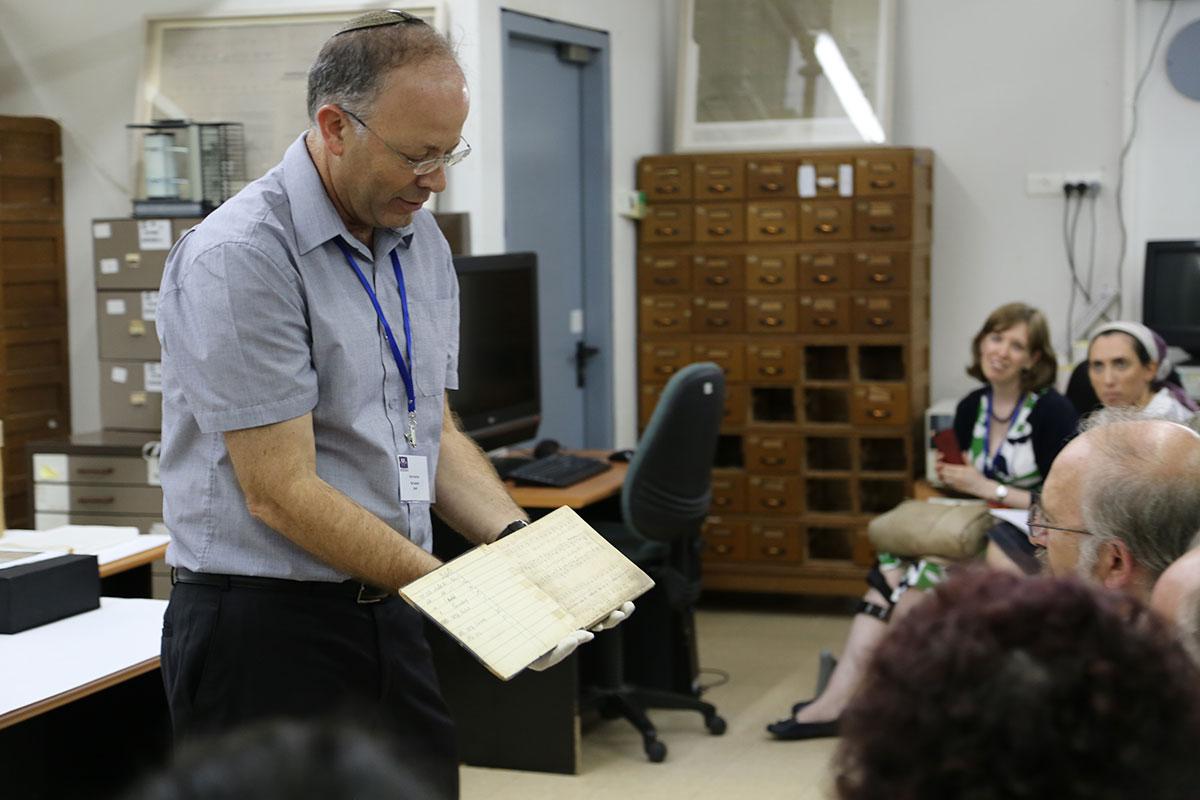

Is there a need to invest in preserving original items in an age when it is possible to display a scanned image of them on the Internet?
In what manner does the digital age affect the traditional divisions between different types of collections?
To what extent can conservation experts intervene and "repair" torn documents or distorted film footage from the Holocaust period?
How can long-term preservation of digital copies of Holocaust documentation be ensured?
These are some of the questions along with many others that were discussed this week at an international experts' workshop, held at Yad Vashem and organized within the framework of the European Holocaust Research Infrastructure (EHRI) project. The workshop "Heritage and Memory: Revising Scopes and Means of Physical and Digital Preservation of Holocaust Documentation" addressed various issues and challenges of conservation of Holocaust period materials in the digital age as well as the intrinsic importance of the need to preserve these images.
This is the first international workshop of its kind, which is designed specifically for scholars involved in the practical, ethical and philosophical aspects of conservation of Holocaust heritage, and for professionals from various fields of conservation who imparted common experience and methodologies. The workshop included the participation of about 30 prominent experts from Europe, Israel and the U.S.A. in both physical and digital conservation and the preservation of primary sources, such as documents, photographs, artworks and artifacts. This workshop also touched on the dilemmas that have arisen in recent years in the ever-expanding field.
"Holocaust documentation is the basis for Holocaust research, was well as the core material for the production of museums and exhibitions, and a resource base for commemorative and educational activities for future generations," explains Yad Vashem Archives Director Dr. Haim Gertner. "These building blocks of memory are scattered across the world, in countless fragments. They were written in hiding, under difficult conditions, with poor materials. Part of the material was in private hands for many decades, not always in adequate conditions. This sensitive documentation is often the last testimony to the life of an individual, or to the execution of murder, and therefore preservation has significant moral, educational and legal implications. At the same time, there is a broadening interest of the wider public in accessing Holocaust documentation that is currently being addressed with the aid of advanced technology, but contained within this exciting process are a number of issues that must be addressed."
The international scholars presented various papers pertaining to their field of expertise. Some topics discussed included the ethics of preservation of original materials, exploring the limits of digitization, physical and digital preservation of Holocaust documentation, opportunities and difficulties of digitization of Holocaust documents and low-cost imaging technologies for art and documents examination. Dr. Haim Gertner commented that the Holocaust archives tell a very important part of history which was abruptly stopped. Therefore, it is our moral obligation to preserve these artifacts along with these personal stories which would otherwise be forgotten. In addition, the seminar was a great success in exchanging these international scholars' different areas of expertise. The seminar provided a platform for the dialogue to take place, which is only the beginning of continued dialogue. The Head of the Paper Conservation Laboratory of the Archives Division at Yad Vashem, Varda Gross, presented to scholars on the topic of preserving the existing and the missing in Holocaust material. She noted, "Items convey personal stories…These items express the power of life, in contrast to the ideology of extermination".









